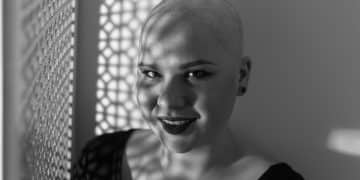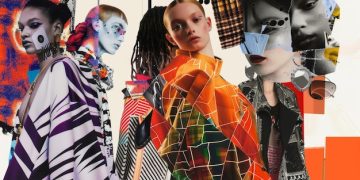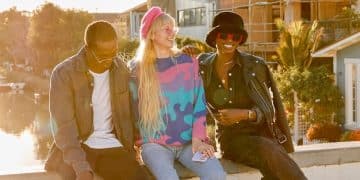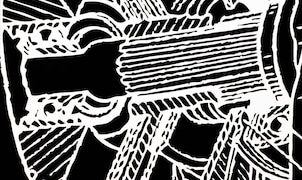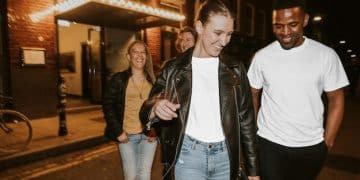Underground Fashion Photography: Capturing the Movement’s Essence
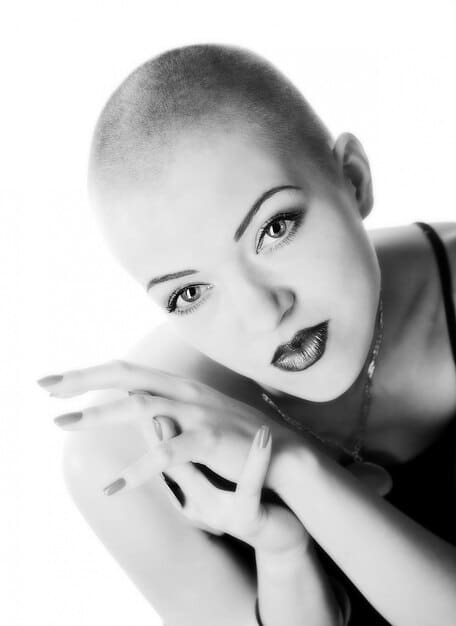
Underground fashion photography captures the raw, unfiltered essence of alternative styles and subcultures, providing a visual narrative of movements that challenge mainstream fashion norms.
Underground fashion photography: capturing the essence of the movement, offers a unique lens into the world of alternative style, where creativity thrives outside the mainstream. It’s a visual dialogue, a rebellion expressed through clothing and captured by the camera. Join us as we explore this fascinating realm.
Defining Underground Fashion Photography
Underground fashion photography is more than just taking pictures of clothes; it’s about documenting a culture. It’s a glimpse into the heart of movements that often go unnoticed by the mainstream fashion world.
This genre thrives on authenticity and challenges conventional beauty standards, showcasing unique styles and personalities. It’s where fashion becomes a form of self-expression and rebellion.
Key Characteristics
Underground fashion photography distinguishes itself through several defining characteristics:
- Rawness and Authenticity: Stripping away the artificial layers to reveal the genuine essence of the subject and their style.
- Challenging Conventions: Actively pushing back against mainstream beauty standards and embracing alternative aesthetics.
- Emphasis on Individuality: Showcasing the unique personality and self-expression of each individual, rather than conforming to trends.
Unlike mainstream fashion photography, which often focuses on idealized images and commercial appeal, underground fashion photography celebrates imperfections and the unfiltered beauty of alternative subcultures. It’s a space where creativity flourishes without constraints.
The History of Underground Fashion Movements
To understand underground fashion photography, it’s crucial to explore the history of the movements it captures. These subcultures have significantly shaped the evolution of style and visual representation.
From punk to goth, each movement has brought its unique aesthetics and ideologies, influencing fashion trends and photographic styles.
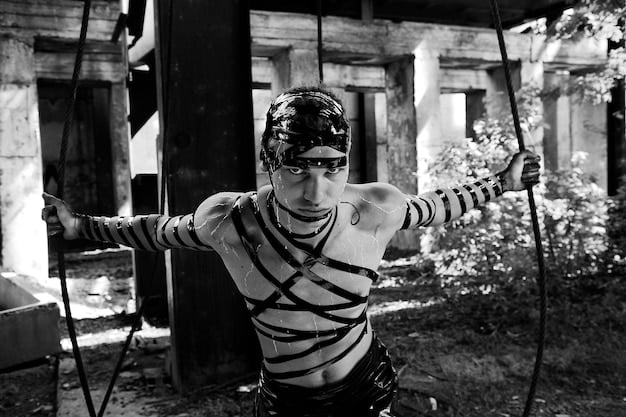
Notable Subcultures and Their Styles
Various subcultures have left an indelible mark on underground fashion. Here are a few:
- Punk: Characterized by anti-establishment aesthetics, DIY clothing, and a rebellious attitude.
- Gothic: Known for its dark and romantic style, featuring black clothing, lace, and dramatic makeup.
- Cyberpunk: A futuristic and technologically-inspired style, often incorporating neon colors, techwear, and dystopian elements.
These movements not only influenced fashion but also provided a platform for photographers to document and celebrate their unique identities. The camera became a tool for preserving and sharing these subcultural narratives.
The Role of the Photographer
The photographer in underground fashion plays a pivotal role. More than just capturing images, they act as documentarians, storytellers, and advocates for the subcultures they photograph.
They immerse themselves in the community, understanding its values and aesthetics, to create visuals that resonate with authenticity and respect.
Capturing Authenticity
Authenticity is paramount in underground fashion photography. To capture it, photographers often adopt specific strategies:
- Building Trust: Establishing genuine connections with their subjects to create a comfortable and open atmosphere.
- Documenting Reality: Avoiding excessive staging or editing to preserve the raw and unfiltered essence of the scene.
- Understanding the Culture: Immersing themselves in the subculture to grasp its nuances and values.
The photographer’s ability to connect with and understand the community is crucial in producing images that genuinely reflect the spirit of the underground fashion movement.
Key Figures in Underground Fashion Photography
Several photographers have become synonymous with underground fashion, their work shaping the visual language of alternative subcultures. Their contributions demonstrate a deep understanding and appreciation for the movements they document.
These key figures have not only captured iconic images but also played a role in defining the aesthetic landscape of underground fashion photography.
Influential Photographers and Their Impact
Here are some influential photographers who have significantly impacted the genre:
- Corinne Day: Known for her raw and intimate portraits that challenged conventional beauty standards.
- Juergen Teller: Celebrated for his unconventional and often humorous approach to fashion photography.
- Nan Goldin: Renowned for her candid and deeply personal documentation of subcultures and marginalized communities.
Each of these photographers brought their unique perspective and style, contributing to the rich tapestry of underground fashion photography. Their work continues to inspire new generations of artists.
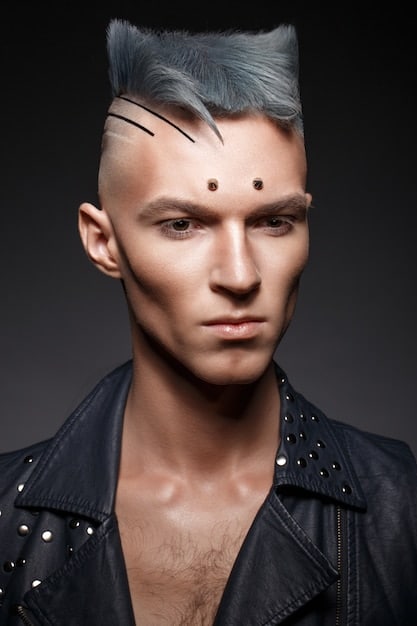
Techniques and Styles
Underground fashion photography employs a variety of techniques and styles, each contributing to the unique visual storytelling that defines the genre. From gritty black and white to vibrant color palettes, the choices reflect the diverse aesthetics of the subcultures.
Experimentation and breaking traditional rules are encouraged, allowing photographers to push the boundaries of visual expression.
Popular Techniques
Some commonly used techniques include:
- Low Lighting: Creating a sense of mystery and drama using minimal light sources.
- Grainy Textures: Adding a raw and unfiltered feel to the images through high ISO settings or film photography.
- Unconventional Compositions: Breaking away from traditional framing and posing to capture authentic moments.
These techniques help to create images that resonate with the authenticity and rebellious spirit of underground fashion. They allow photographers to capture the essence of the movement in a visually compelling way.
The Future of Underground Fashion Photography
As fashion evolves, so does underground fashion photography. The rise of digital media and social platforms has provided new avenues for sharing and celebrating alternative styles. This shift highlights the ongoing importance of visual storytelling in shaping cultural narratives.
The future promises greater accessibility and broader recognition for the genre, empowering photographers and subcultures alike.
Emerging Trends
Several trends are shaping the future of underground fashion photography:
- Digital Platforms: Increased use of social media and online galleries for showcasing work and connecting with audiences.
- Inclusivity and Diversity: Greater emphasis on representing diverse identities and body types within subcultures.
- Sustainability: Growing interest in eco-conscious fashion and ethical photography practices.
These trends reflect a broader cultural shift towards inclusivity, sustainability, and authenticity, ensuring that the future of underground fashion photography remains vibrant and relevant.
| Key Point | Brief Description |
|---|---|
| 📸 Authenticity | Capturing the raw essence of subcultures. |
| 🖤 Subcultures | Documenting unique styles within movements like punk and goth. |
| 💡 Techniques | Using low lighting and grainy textures for visual storytelling. |
| 🌐 Digital Shift | Leveraging social media for broader recognition. |
What is underground fashion photography?
Underground fashion photography captures the essence of alternative styles and subcultures, focusing on authenticity and challenging mainstream norms.
Authenticity ensures the photography reflects the genuine identity and values of the subculture, avoiding superficial or commercial representations.
Notable figures include Corinne Day, Juergen Teller, and Nan Goldin, each known for their unique and impactful contributions to the genre.
Common techniques involve low lighting, grainy textures, and unconventional compositions, enhancing the raw and unfiltered feel of the images.
Digital platforms provide new avenues for showcasing work, connecting with audiences, and promoting inclusivity and diversity within subcultures.
Conclusion
In conclusion, underground fashion photography: capturing the essence of the movement, remains a vital form of visual storytelling. It continues to document and celebrate the diverse, dynamic, and often overlooked subcultures that shape our world, pushing boundaries and challenging conventions through the power of the lens.
